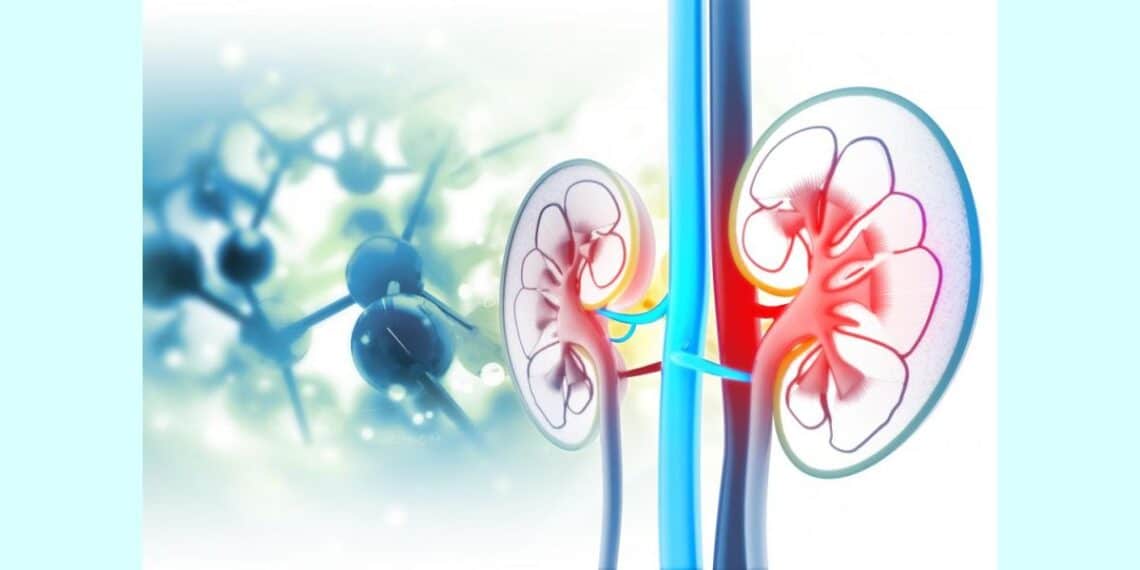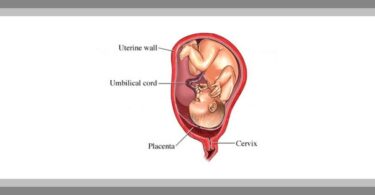Anuria is the complete absence of urine production. Oliguria is present when less than 30 ml of urine is excreted in twenty four hours. Anuria may occur due to Prerenal, renal and Postrenal causes.
Anuria Causes
The Prerenal causes of anuria include hypovolemia, sepsis, cardiogenic shock and hypoxia. Hypovolemia may result from inadequate fluid intake or its excessive loss from the body. Blood loss caused by injury and other causes also leads to hypovolemia. Cardiogenic shock due to myocardial infarction may result in low cardiac output and poorly oxygenated blood.
The renal causes are mostly due to damage or ischemia of the glomeruli and renal tubules. The main causes are incompatible blood transfusion, severe shock for a long period, myoglobinuria, the presence of myoglobin in the urine is associated with crush syndrome after major trauma; disseminated intravascular coagulation usually follows major sepsis or massive blood transfusion and may occur postpartum. Certain, nephrotoxic agents like contrast media for angiography, and toxins of eclampsia may lead to anuria.
Postrenal anuria is usually due to obstruction to flow the urine through the lower urinary tract. Calculus disease is a common cause of acute obstruction leading to anuria, e.g. the stone obstructing the ureter of the only functioning kidney.
The problem cause of anuria should be established. The bladder is catheterized if a voided sample cannot be obtained. Urine is checked for specific gravity, presence of casts (implying a renal cause), urine is sent for culture and microscopy. Any obvious prerenal cause is looked into; what drugs have been given recently? Is there a uretric obstruction?
The renal anuria due to acute tubular necrosis can be reversible and may progress through three recognizable phases: (1) phase of Oliguria; (2) phase of dieresis; and (3) phase of recovery.
During the Oliguria phase, excess fluid loads must be avoided and fluid intake restricted to match the reduced output plus insensible losses. Abnormal losses (vomiting, nasogastric suction, diarrhoea) will need to be monitored and replaced. Electrolyte balance needs to be maintained. Sodium chloride or bicarbonate should never be infused and fluid containing potassium should be prohibited.
During the diuretic phase which occurs round about the 8th day. Glomerular function recommences but tubular function take time to recover. A heavy loss of sodium and potassium can be expected and fluid requirements be carefully judged.
In most patients the diuretic phase is followed by the recovery phase.
Renal replacement (in form of peritoneal dialysis or haemodialysis) is needed for those patients in whom the oliguric or anuric phase is associated with uremic symptoms or uncontrollable hyperkalaemia.
In patients too ill for surgery to remove the cause of obstruction to the upper urinary tract, the treatment of obstructive renal impairment is drainage either exteriorly using a nephrostomy or internally using an indwelling stent.
Diagnostic Approach to Anuria
Distinguish anuria from urinary retention. Non-obstructive anuria is accompanied by symptoms of uremia with vomiting, drowsiness, muscle twitch, headache, and asterixis. Urinary retention causes suprapubic pain, constant urgency, and a palpable bladder with dullness to percussion in the suprapubic region.
History
- Ask the patient about changes in his voiding pattern.
- Determine the amount of fluid normally ingested each day, the amount of fluid ingested in the past 24 to 48 hours, and the time and amount of the patient’s last urination.
- Review the patient’s medical history, noting especially previous kidney disease, urinary tract obstruction or infection, prostate, enlargement, renal calculi, neurogenic bladder, congenital abnormalities, and abdominal, renal, or urinary tract surgery.
- Obtain a drug history, including prescription and over the counter drugs, herbal remedies, and recreational drugs. Also, ask the patient about alcohol intake.
Physical Assessment
- Take the patient’s vital signs.
Major Causes of Acute Renal Failure
Prerenal causes
- Decreased cardiac output
- Hypovolemia
- Peripheral vasodilatation
- Reno vascular obstruction
- Severe vasoconstriction
Internal Cause
- Acute tubular necrosis
- Cortical necrosis
- Glomerulonephritis
- Papillary necrosis
- Renal vascular occlusion
- Vacuities
Postrenal Causes
- Bladder obstruction
- Ureteral obstruction
- Urethral obstruction
- Inspect and palpate the abdomen for asymmetry, distention, or bulging.
- Inspect the flank area for edema or erythema, and percuss and palpate the bladder.
- Assess a urine sample for cloudiness and foul odor.
Homeopathic treatment of Anuria symptoms
Homeopathy is one of the most popular holistic systems of medicine. The selection of remedy is based upon the theory of individualization and symptoms similarity by using holistic approach. This is the only way through which a state of complete health can be regained by removing all the sign and symptoms from which the patient is suffering. The aim of homeopathy is not only to treat Anuria symptoms but to address its underlying cause and individual susceptibility. As far as therapeutic medication is concerned, several remedies are available to cure Anuria symptoms that can be selected on the basis of cause, sensations and modalities of the complaints. For individualized remedy selection and treatment, the patient should consult a qualified homeopathic doctor in person. There are following remedies which are helpful in the treatment of Anuria symptoms:
Aconite, Apis Mel, Arsenic Album, Belladonna, Camphor, Cantharis, Colchicum, Digitalis, Lycopodium, Kali Bi, Merc Cor, Opium, Apocynum, Stramonium, Bryonia, Coffea, Petroleum, Nitric Acid and many other medicines.
References:
Gupta; Textbook of Surgery; 2003; 1098
David S. Smith; Field Guide to Bedside Diagnosis; 2006; 138
Springhouse, Lippincott Williams & Wilkins ; Rapid assessment; a flow chart guide to evaluating signs and symptoms; 2003 ; 26





